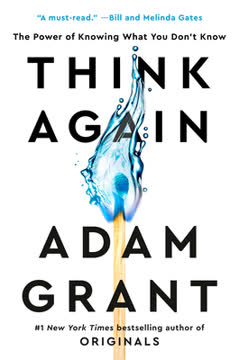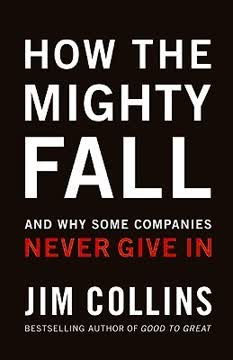重点摘要
1. 五级领导力:伟大的意外基础
五级领导者将自我需求转向更大的目标,即建立伟大的公司。
谦逊而坚定。 五级领导者具备个人谦逊与职业意志的矛盾结合。他们对公司的抱负超越了个人利益,将成功归因于外部因素,同时对不佳的结果承担个人责任。
关键特征:
- 展现出令人信服的谦逊,拒绝公众的赞美
- 以安静、冷静的决心行事,依靠激励的标准,而非个人魅力
- 将抱负引导至公司,而非自身
- 反思自身,而非指责他人,以分配对不佳结果的责任
这些领导者通过个人谦逊与职业意志的矛盾结合,构建持久的伟大。他们更像林肯和苏格拉底,而非巴顿或凯撒。
2. 先人后事:将合适的人放上公交车
引发从优秀到卓越转变的高管们,并不是先确定公交车的行驶方向,然后再让人们上车。相反,他们首先将合适的人放上公交车(并将不合适的人赶下车),然后再决定行驶的方向。
人重于战略。 伟大的公司在确定战略之前,首先关注将合适的人放在关键位置。这种方法使公司在发展过程中更具灵活性和适应性。
关键原则:
- 如果你有合适的人,他们会自我激励
- 合适的人不需要严格管理或激励
- 如果你有不合适的人,发现正确的方向也无济于事
这一概念强调了建立一支自律团队的重要性,这些团队成员无论具体战略如何,都能表现出色。它旨在创造一个合适的人才能够茁壮成长,而不合适的人则难以立足的文化。
3. 面对残酷事实:斯托克代尔悖论
你必须坚定不移地相信自己最终能够胜利,无论面临多大的困难,同时又要有面对当前现实中最残酷事实的自律,无论这些事实是什么。
平衡乐观与现实。 斯托克代尔悖论以詹姆斯·斯托克代尔海军上将命名,强调在保持希望的同时面对现实的重要性。这种方法使公司能够在不失去最终目标的情况下做出明智的决策。
关键实践:
- 以问题引导,而非答案
- 进行对话和辩论,而非强制
- 进行无责备的剖析
- 建立“红旗”机制,将信息转化为不可忽视的信息
通过接受这一悖论,公司能够更有效地应对挑战,从失败中学习而不气馁。这种心态在逆境中培养了韧性和适应能力。
4. 刺猬概念:三圈中的简单性
从优秀到卓越需要超越能力的诅咒。
找到你的甜蜜点。 刺猬概念是关于理解三个关键要素的交集:你能在世界上做到最好的事情、驱动你经济引擎的因素,以及你深深热爱的事物。
三个圈:
- 你能在世界上做到最好的事情(以及你不能做到最好的事情)
- 驱动你经济引擎的因素
- 你深深热爱的事物
这一概念鼓励公司专注于他们真正能够出色的领域,而不是追求超出核心竞争力的机会。它强调简单性和清晰性,而非复杂性和混乱。通过理解和对齐这三个要素,公司能够在市场中实现持续的成功和差异化。
5. 纪律文化:框架内的自由
持续的卓越成果依赖于建立一个充满自律的文化,成员采取与三圈一致的自律行动。
自律的人、思想和行动。 纪律文化将创业文化与自律行为的伦理结合在一起。它并不是关于专制的纪律者,而是关于灌输在刺猬概念的三圈内保持自律的能力。
关键方面:
- 招聘不需要管理的自律人才
- 进行自律思考,以面对残酷事实并发展洞察力
- 采取与刺猬概念一致的自律行动
这种文化允许在公司核心关注的框架内进行创造性和自主性。它旨在在明确的参数内给予人们自由和责任,促进创新,同时保持战略一致性。
6. 技术加速器:避免时尚和潮流
技术本身从来不是伟大或衰退的主要根本原因。
技术的战略应用。 从优秀到卓越的公司对待技术的方式与众不同。他们避免追逐技术潮流,而是专注于直接支持其刺猬概念的技术。
技术使用原则:
- 确定技术是否符合你的刺猬概念
- 如果符合,成为该技术应用的先驱
- 如果不符合,选择持平或完全忽视
这些公司将技术视为推动势头的加速器,而非创造者。他们仔细选择与核心战略一致的技术,避免追求技术本身的陷阱。
7. 飞轮效应:势头胜过激烈变革
从优秀到卓越是一个累积的过程——一步一步、行动行动、决策决策、飞轮的每一次转动,最终汇聚成持续而卓越的成果。
持续的累积进步。 飞轮效应说明了从优秀到卓越的转变是通过持续的小胜利逐步积累势头,而不是依赖单一的戏剧性事件。
飞轮的阶段:
- 自律的人
- 自律的思想
- 自律的行动
- 积累
- 突破
这一概念强调了在实现伟大过程中坚持和一致性的重要性。它强调做出一系列良好决策的重要性,这些决策经过勤奋执行并逐步积累,而不是依赖单一的变革性项目或创新。
8. 从优秀到卓越再到持久:维持卓越
伟大不是环境的产物。伟大,实际上,主要是一个有意识的选择。
持久的伟大。 从优秀到卓越的旅程只是开始。为了维持卓越,公司必须将其核心价值观和目标超越单纯盈利的理念融入其本质。
维持伟大的关键要素:
- 保持核心意识形态
- 刺激进步
- 将短期行动与长期愿景对齐
这一最终概念将“从优秀到卓越”的思想与柯林斯早期作品《持久的伟大》中的思想结合在一起。它强调,成为伟大是一个选择,而非环境的结果,维持伟大需要持续承诺核心原则,同时适应变化的世界。
最后更新日期:
FAQ
What's Good to Great about?
- Transforming Companies: Good to Great by Jim Collins examines how companies transition from being merely good to achieving sustained greatness.
- Research-Based Insights: The book is based on a five-year research project analyzing companies that made the leap to greatness and sustained it for at least fifteen years.
- Framework for Success: Collins presents a framework including concepts like Level 5 Leadership, the Hedgehog Concept, and a Culture of Discipline.
Why should I read Good to Great?
- Practical Application: The book provides actionable insights applicable to various organizations, not just businesses.
- Timeless Principles: Collins emphasizes that the findings are universally applicable, guiding any organization through change.
- Inspiring Stories: It includes compelling case studies of companies like Walgreens and Kimberly-Clark, illustrating success through disciplined practices.
What are the key takeaways of Good to Great?
- Level 5 Leadership: Great companies are led by leaders who combine personal humility with professional will.
- Hedgehog Concept: Successful companies focus on what they can be the best at, what drives their economic engine, and what they are deeply passionate about.
- Culture of Discipline: A culture fostering self-disciplined people who take disciplined action is crucial for maintaining focus.
What is the Hedgehog Concept in Good to Great?
- Three Intersecting Circles: It is defined by the intersection of what you can be the best at, what drives your economic engine, and what you are deeply passionate about.
- Simplicity and Clarity: The concept emphasizes simplicity in strategy, allowing companies to align decisions with core strengths.
- Example of Walgreens: Walgreens focused on being the best at convenient drugstores, driving their remarkable stock performance.
What is Level 5 Leadership as described in Good to Great?
- Duality of Traits: Level 5 leaders exhibit a blend of personal humility and professional will, prioritizing the company’s success over their own ego.
- Focus on Successors: They prioritize setting up successors for success, ensuring the company’s long-term viability.
- Examples of Leaders: Leaders like Darwin Smith of Kimberly-Clark exemplify Level 5 leadership through selfless dedication.
How do good-to-great companies confront brutal facts?
- Honest Assessment: They maintain a culture where brutal facts are confronted head-on, allowing informed decisions.
- Stockdale Paradox: They retain faith in eventual success while confronting harsh realities, helping navigate challenges.
- Example of Kroger: Kroger’s leadership transformed their business model in response to market changes, leading to success.
What is a Culture of Discipline in Good to Great?
- Self-Disciplined People: It is characterized by self-disciplined individuals taking action aligned with the company’s Hedgehog Concept.
- Freedom Within Framework: Companies foster an environment where employees innovate within a structured framework.
- Contrast with Comparison Companies: Unlike others, good-to-great companies build enduring cultures of discipline beyond individual leaders.
What role does technology play in Good to Great?
- Technology as an Accelerator: Technology is viewed as an accelerator of momentum rather than a creator of it.
- Pioneering Applications: Companies like Walgreens became pioneers in applying technology that supported their core strategies.
- Avoiding Technology Traps: The book warns against relying solely on technology without understanding its fit into the overall strategy.
What is the Flywheel Effect in Good to Great?
- Cumulative Momentum: It describes building momentum through consistent, disciplined actions over time.
- No Single Defining Moment: Transformations result from many small pushes, not a single breakthrough.
- Sustained Results: Companies experience sustained performance improvements, creating a self-reinforcing cycle of growth.
What is the Doom Loop in Good to Great?
- Cycle of Inconsistency: It describes companies that fail to achieve sustained greatness by lurching from one initiative to another.
- Misguided Strategies: These companies attempt breakthroughs through large acquisitions rather than incremental improvements.
- Failure to Learn: They often fail to confront brutal facts, leading to a lack of accountability and adaptability.
What are the best quotes from Good to Great and what do they mean?
- “Good is the enemy of great.”: Settling for good prevents organizations from achieving greatness, urging continuous improvement.
- “You must retain faith...”: Balancing optimism with realism is key, as highlighted by the Stockdale Paradox.
- “The right people will do the right things...”: Emphasizes the importance of having the right people aligned with company values.
How can I apply the concepts from Good to Great to my organization?
- Identify Your Hedgehog Concept: Understand what your organization can be the best at, what drives your economic engine, and what you are passionate about.
- Foster Level 5 Leadership: Encourage leaders to embody Level 5 traits, focusing on humility and long-term success.
- Create a Culture of Discipline: Build a disciplined culture where self-motivated individuals take action aligned with organizational goals.
评论
《从优秀到卓越》获得了褒贬不一的评价。许多人赞扬其研究方法论以及对领导力、纪律性和专注核心优势的洞察。读者发现这些概念不仅适用于商业领域。批评者则认为这些原则过于常识化,样本量过小,且一些被提及的公司后来遭遇了困境。书中陈旧的例子和流行语让一些人感到厌烦。总体而言,这本书被视为一本有影响力的商业书籍,尽管人们对其持久的相关性和科学有效性看法不一。




















